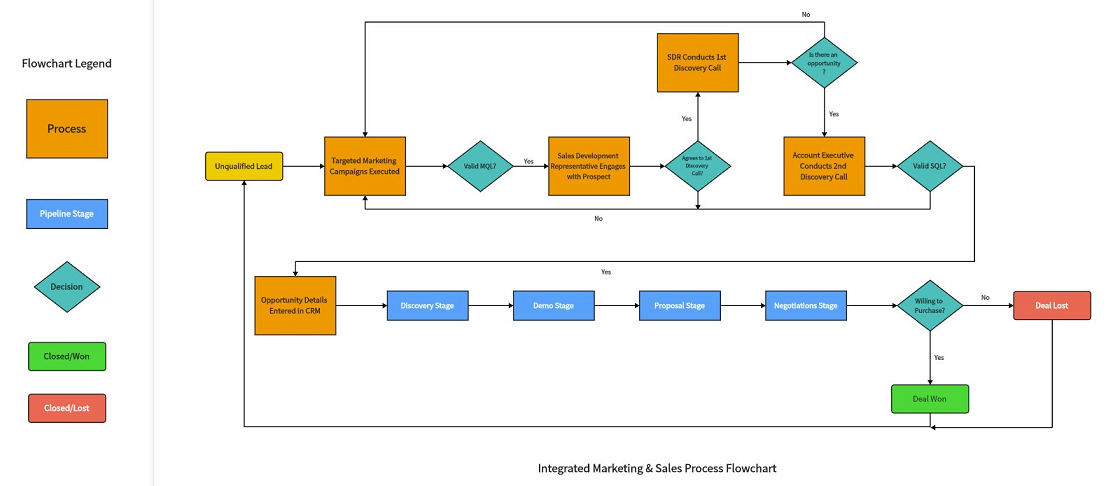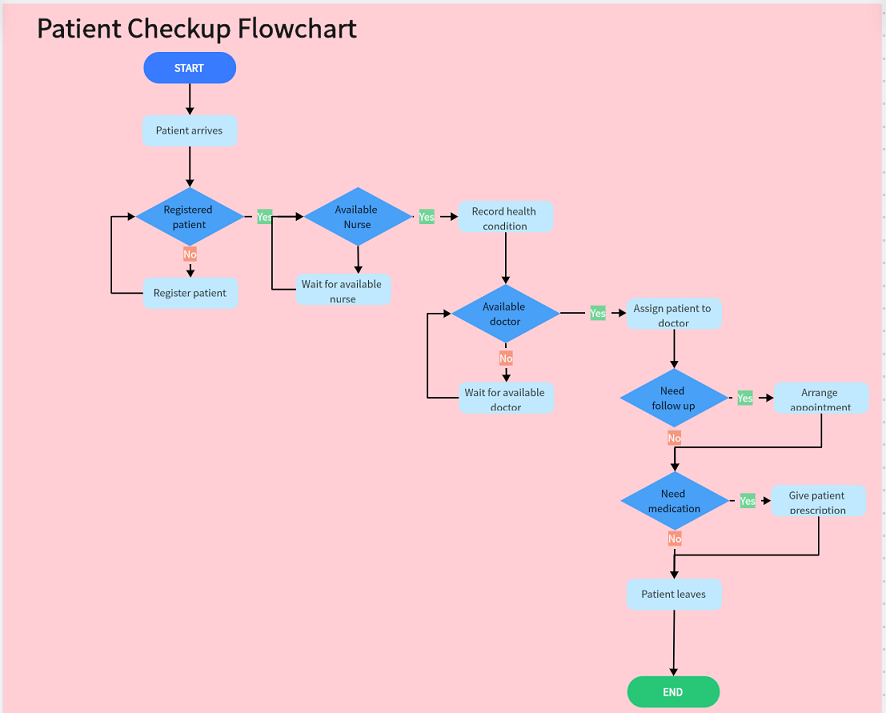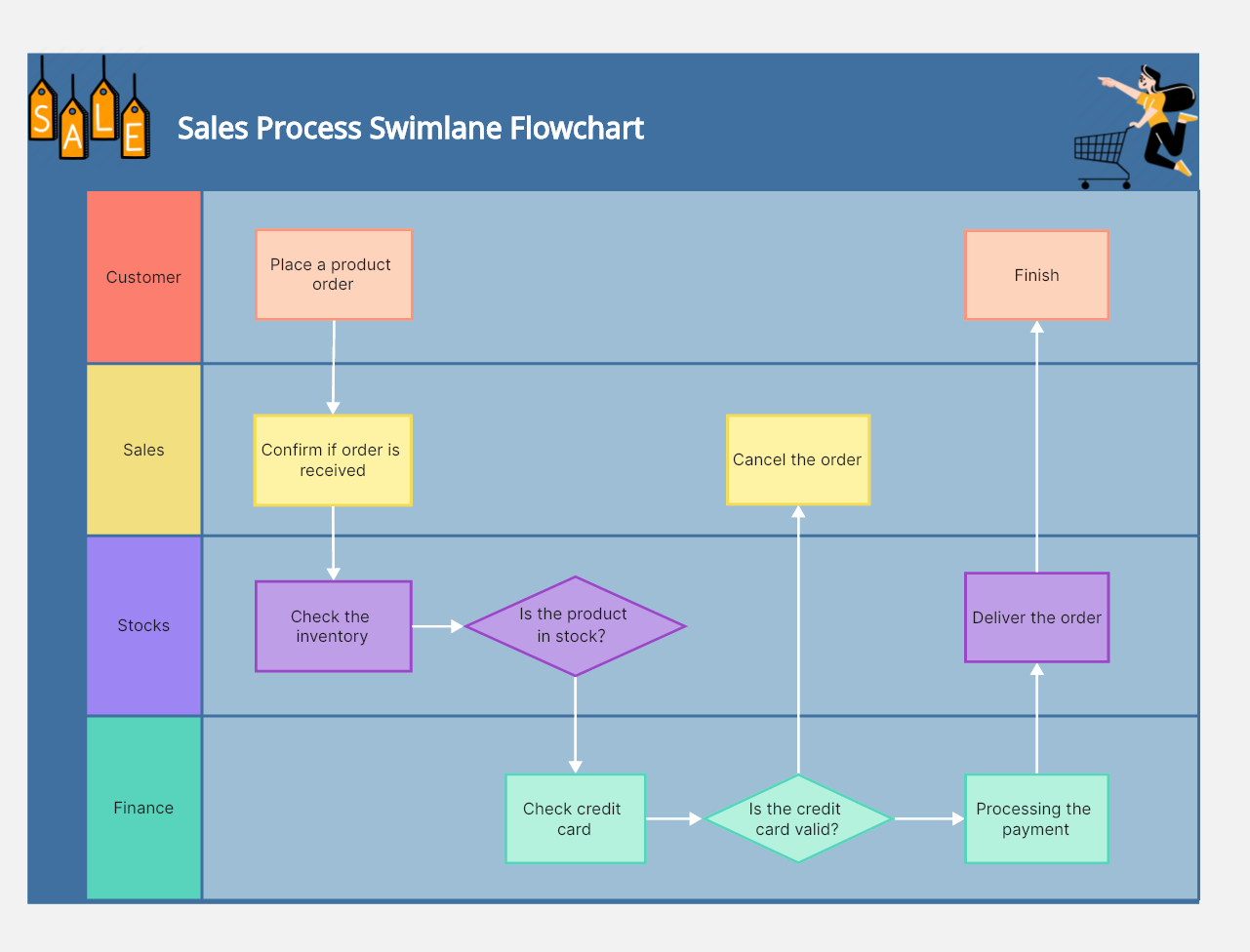In an age where efficiency and productivity are key to any operation's success, understanding and managing work processes effectively has never been more important. This is where workflow charts come into play. Providing a visual depiction of work processes, these diagrams serve as a crucial tool for businesses seeking to streamline their operations, train staff, and improve overall workflow.
What Is a Workflow Chart
A workflow chart is a diagram that precisely illustrates the flow of a work process from start to finish. It graphically depicts the sequential tasks, interactions, and decisions involved in completing a specific task or project. Symbols such as boxes, circles, and arrows are used to represent different steps, processes, and the flow of work. This enables viewers to get a clear picture of how tasks fit together, what happens next in the process, and where decision points occur.

When to Use a Workflow Diagram
The usage of workflow diagrams is not limited to any particular industry or function; they can be beneficial whenever there's a need to understand a process better or enhance its efficiency. Specifically, a workflow diagram can be used to:
- Visualize and Understand Processes: Whether you're new to an organization or looking to gain clarity about a complex process, workflow diagrams provide an easy-to-understand visual aid.
- Optimize Work Processes: By visualizing a process, you can easily identify bottlenecks, redundancies, or gaps that can be removed or improved for better efficiency.
- Onboard and Train Employees: Workflow diagrams can serve as effective training tools, providing new hires with a visual guide of their job functions.
Benefits of Workflow Diagrams
Using workflow diagrams provides multiple benefits across different levels of an organization:
- Enhanced Understanding: By breaking down complex processes into distinct steps, workflow diagrams facilitate easier understanding of how tasks are connected.
- Better Communication: As visual aids, these diagrams can communicate information about processes more effectively than text descriptions alone.
- Improved Efficiency: Identifying and eliminating unnecessary steps can help streamline work processes, saving time and resources.
In essence, workflow charts are invaluable tools for understanding and improving work processes within an organization. They provide a clear picture of the sequence of tasks, highlight areas for improvement, and serve as effective communication tools.
Types of Workflow Charts
Workflow charts come in different types, each with its unique way of illustrating processes. Here are the most commonly used types:
Flowchart
Flowcharts are the simplest and most commonly used type of workflow charts. They use different shapes to depict tasks, decisions, and the flow of the process. Arrows indicate the direction of workflow, making it easy to understand.

Swimlane Diagrams
Swimlane diagrams take flowcharts a step further by segregating tasks according to the department or person responsible for them. This visual arrangement provides clarity on responsibilities and enhances the understanding of cross-departmental processes.

Data Flow Diagrams
Data Flow Diagrams (DFDs) are specially designed to depict how information moves through a system. They illustrate how data is input, processed, stored, and output in a system, making them ideal for analyzing and designing information systems.

Business Process Model and Notation (BPMN)
BPMN is a standardized graphical notation for drawing business processes in a workflow. It provides businesses with a standard method of illustrating their processes so they can be easily understood, communicated, and improved upon.

How to Make a Workflow Diagram
Creating a workflow diagram may seem challenging, but with the right approach, it can be quite straightforward. Here is a simple guide:
- Identify the Process: The first step is to clearly identify the process you want to chart. Understand its purpose, start and end points, and all the steps in between.
- Gather Information: Once you have identified the process, gather all necessary information about it. This includes tasks, decisions, sequence of operations, and roles involved in the process.
- Choose a Chart Type: Based on your process's complexity and the level of detail you want to depict, choose an appropriate type of workflow chart.
- Draw the Chart: Start by drawing the start and end points. Then, add all the tasks and decisions in their sequential order, connecting them with arrows to represent the flow.
- Review and Refine: After completing your initial draft, review it for accuracy and clarity. Ask other people involved in the process to review it as well, then refine based on their feedback.
With these steps, you can create a functional and efficient workflow chart that brings clarity and improves productivity in your work processes.
Boardmix - A One-stop Workflow Diagram Maker
Boardmix is a comprehensive workflow diagram maker designed to simplify the process of creating, managing, and optimizing work processes. This user-friendly tool helps businesses visualize their processes using a range of workflow diagrams, facilitating clarity, communication, and efficiency.

Key Features of Boardmix
User-Friendly Interface
Boardmix features an intuitive interface that makes it easy for anyone to create complex workflow diagrams. No technical expertise is required, making it accessible to all team members.
Wide Range of Templates
From simple flowcharts to complex business process model and notation (BPMN) diagrams, Boardmix provides a variety of templates to suit all your workflow charting needs.
Real-time Collaboration
Boardmix supports real-time collaboration, enabling teams to work together simultaneously on workflow diagrams. This improves efficiency and fosters better team synergy.
Cloud-Based
As a cloud-based tool, Boardmix allows you to access and edit your workflow diagrams anytime, anywhere. Changes are saved automatically and instantly visible to all collaborators.
With Boardmix, creating workflow diagrams is no longer a complex task but an efficient and collaborative experience that contributes significantly to business performance and productivity.













